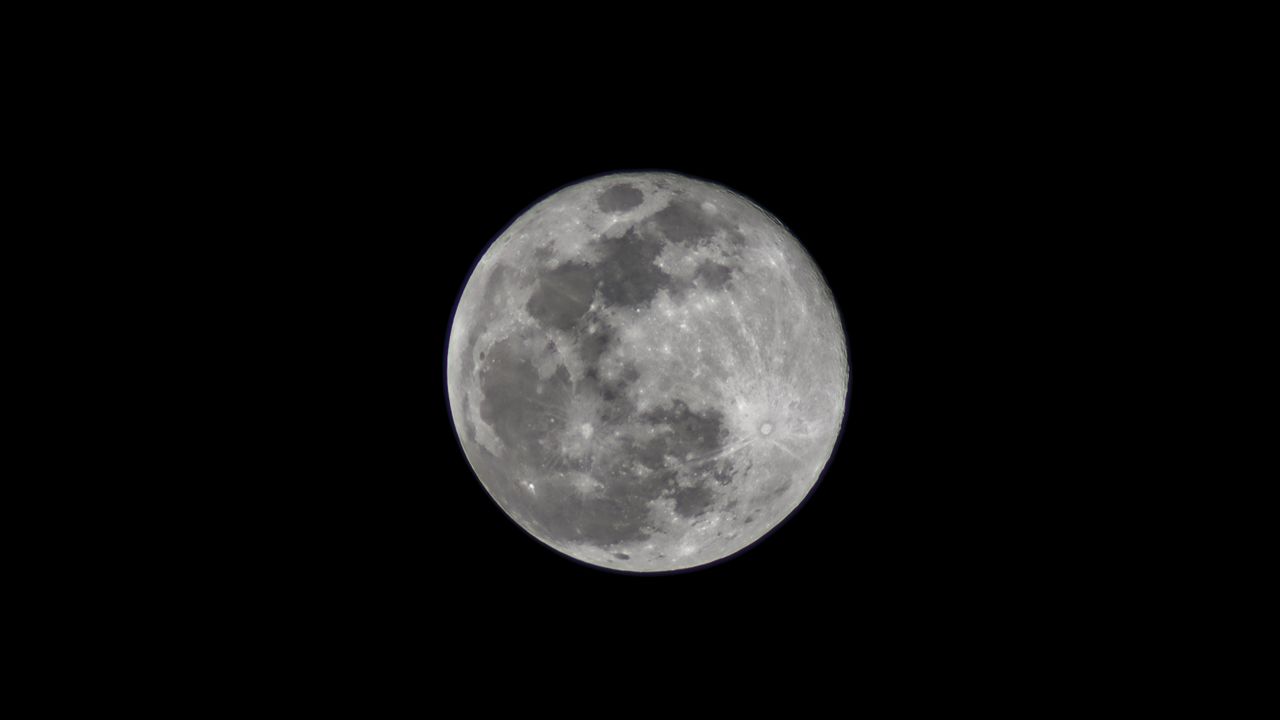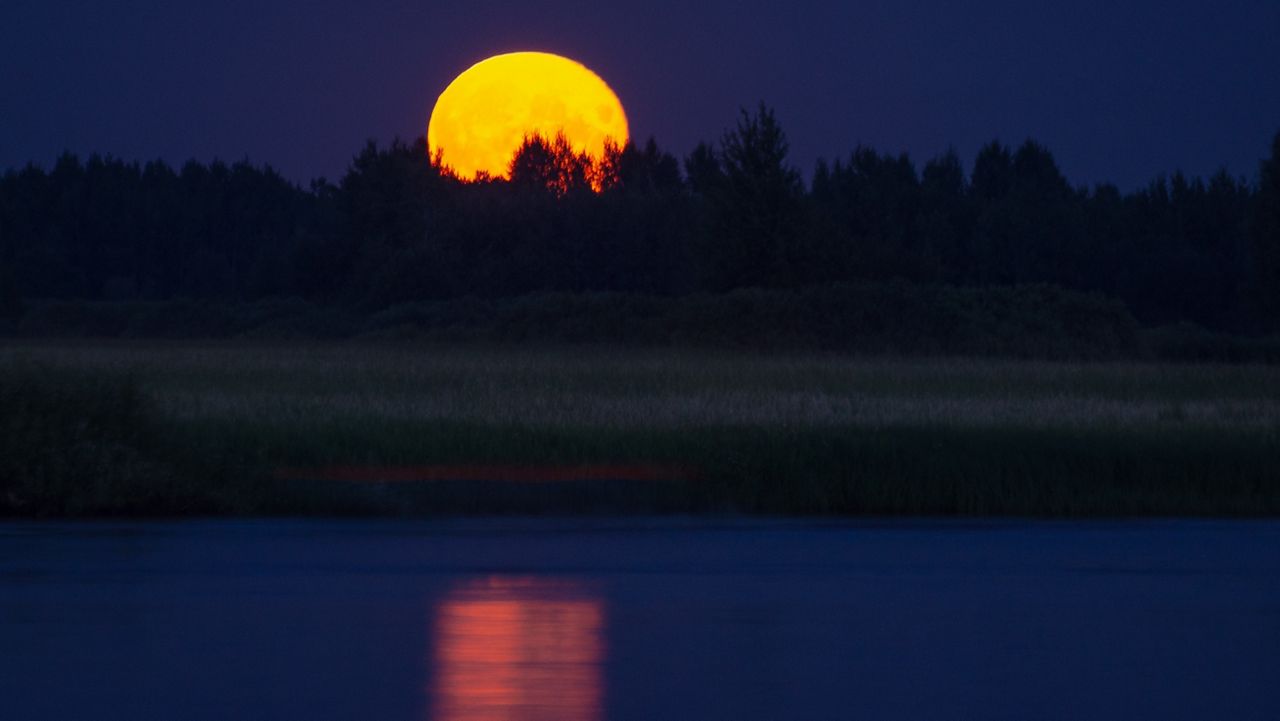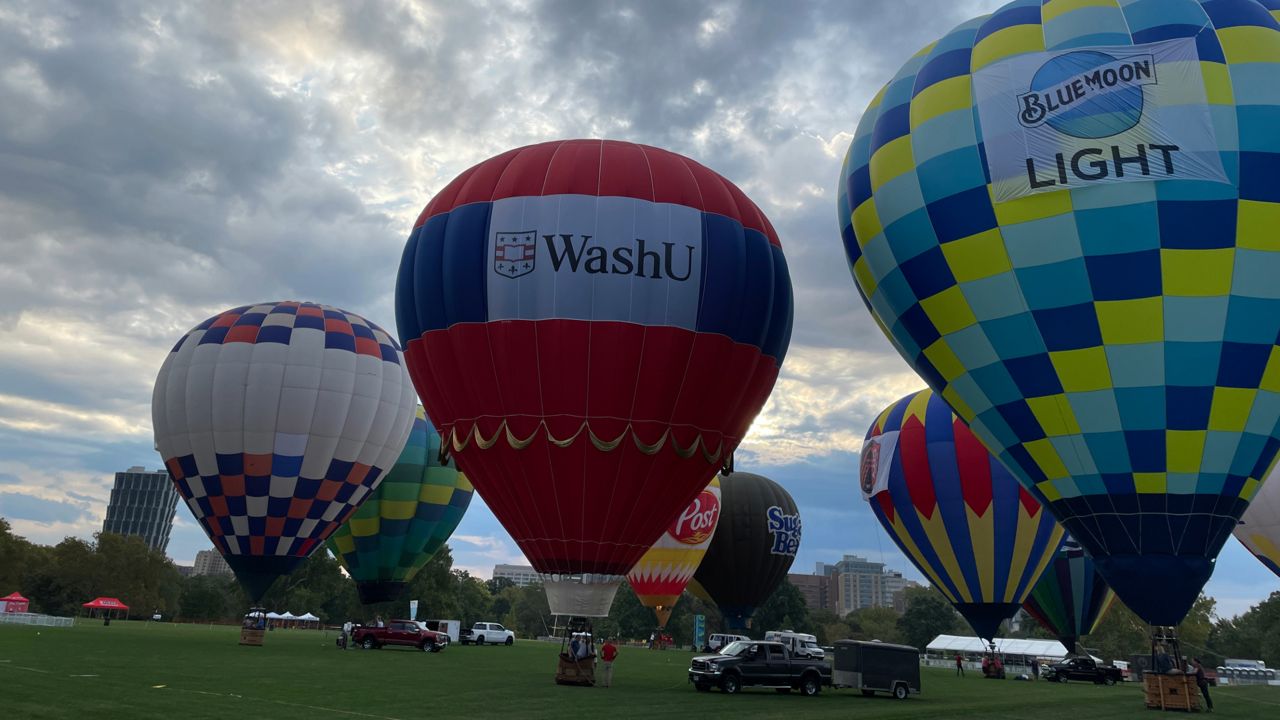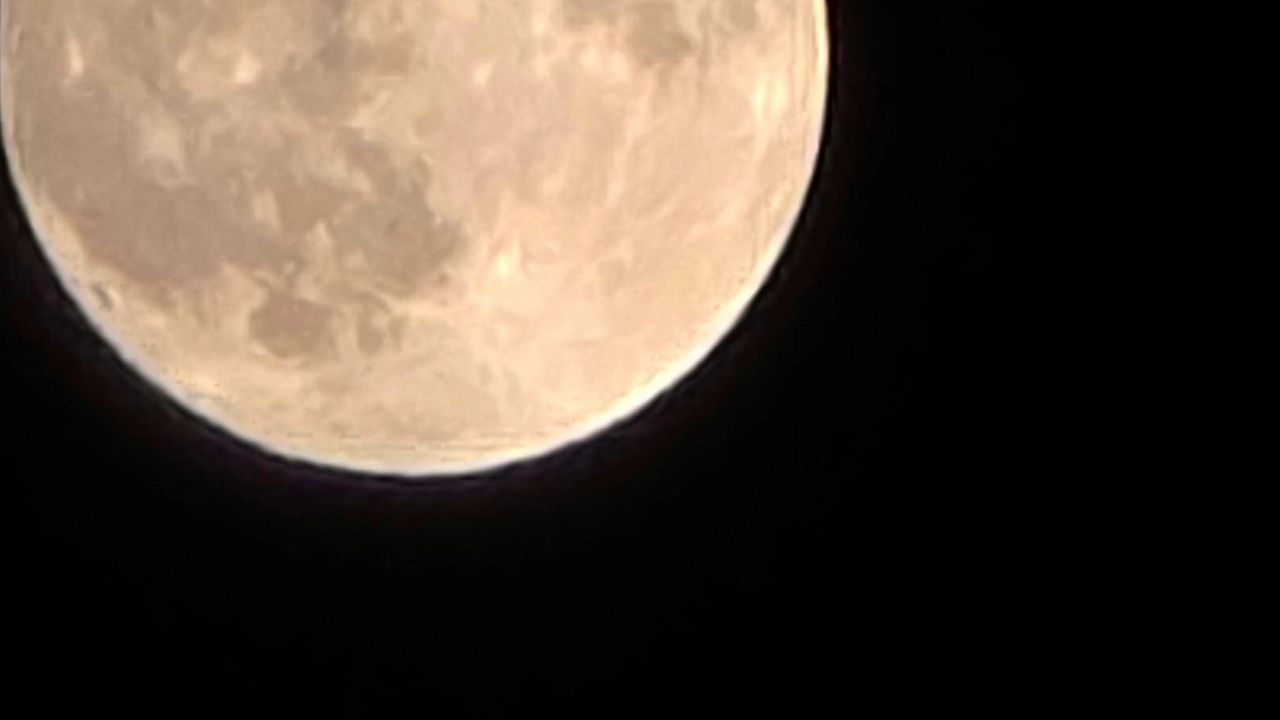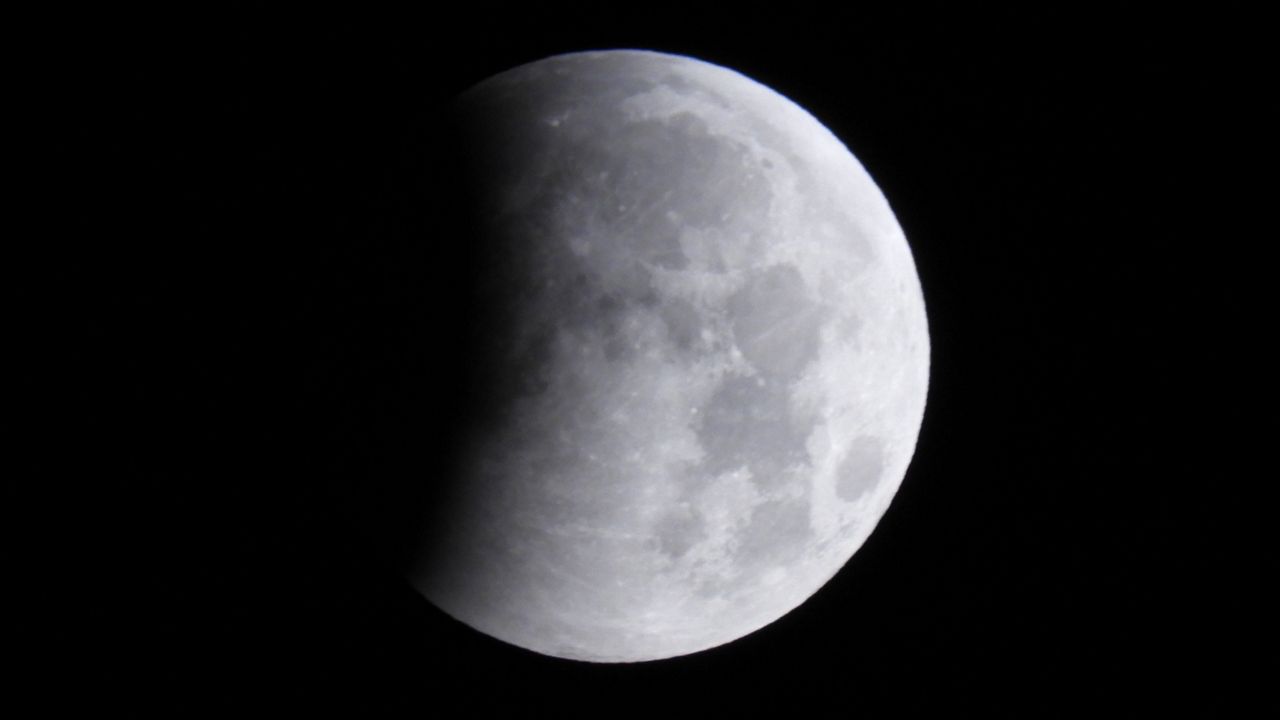This month’s full moon will peak on Monday just before 2:30 p.m. Eastern Time and will be the first of the supermoons this year.
Nicknamed the Sturgeon Moon, it will appear larger and brighter than the other full moons seen thus far this year.
“A supermoon is when Earth’s lunar sister’s orbit is at its closest to the planet and when it is full,” explains Spectrum News’ space expert Anthony Leone.
Adding, “We don’t always get them because the moon’s orbit is more of an oval. So, when the moon is at its closest orbit to Earth, called a perigee, we get a supermoon.”
He says during this time the moon will appear brighter and look “super-sized.”
This moon is also considered a “Blue Moon,” which has nothing to do with the color. According to NASA, the third full moon that occurs in a season that has four full moons denotes the third one as a seasonal Blue Moon. A monthly Blue Moon would be the second full moon that occurs during the month.
According to the farmer’s almanac, names of moons corresponded with entire lunar months and were derived from Native American, Colonial American and European sources.
The full moon was dubbed the sturgeon moon thanks to the abundant native freshwater fish caught during late summer in the Great Lakes and Lake Champlain. These prehistoric-looking fish provided an important staple for Native Americans in that region.
There are nearly 30 species of sturgeon worldwide, including the lake sturgeon found in the Great Lakes. The sizes of these fish have evolved from the size of a bass to the size of a car. Unfortunately, due to overfishing in the 19th century, pollution and habitat damage, the lake sturgeon is rare.
Alternative moon names include Flying Up Moon, a Cree term for when young birds leave the nest. Corn Moon, Harvest Moon, Ricing Moon and Black Cherries Moon all refer to a time of maturing crops.
If you can’t witness this month’s supermoon, Leone says there will be plenty more opportunities. “We will get a celestial treat this year. We will get four supermoons in a row, from August through November.”
He mentions that September’s supermoon will be extra special. “It will also fall on a partial lunar eclipse. This will give the moon a bit of a reddish color to it and that’s because of the way Earth’s atmosphere refracts light.”
Check your local forecast here to see how clouds may affect your viewing.
Our team of meteorologists dives deep into the science of weather and breaks down timely weather data and information. To view more weather and climate stories, check out our weather blogs section.





